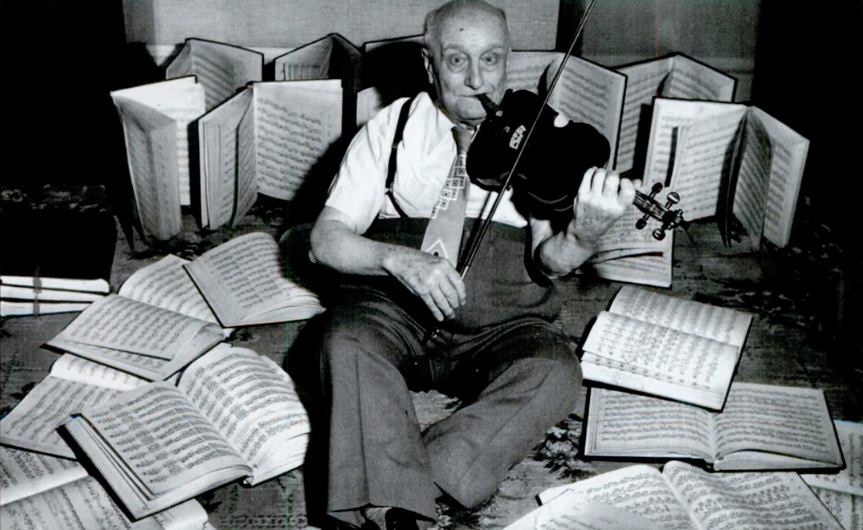Charles Vaclav Rychlik
(1875–1962) left Cleveland as a young man to study for five years with
Dvořák in Prague. A great day in Rychlik’s life took place on March 27, 1896. As later recounted by The Cleveland Press, the violinist was appearing in Vienna with the Bohemian Quartet when, “In the morning, with friends, he visited Anton Bruckner, the Austrian composer. Then they had lunch with the great Johannes Brahms. In the evening the quartet’s performance was attended by Brahms and Anton Dvořák,” and Rychlik and friends played an as yet unpublished Dvořák quartet in his living room as the he sat listening appreciatively.
Born in Cleveland, Ohio, to Vaclav and Karoline Rychlik (née Cermack), young Charles studied violin with Johann Beck and composition with James Hotchkiss Rogers, becoming, at the age of 14, the youngest member of the Cleveland Musicians Union. At 16, in 1891, he was accepted into the Prague Conservatory. He would spend five years playing viola with the Bohemian String Quartet.

Fair use photo – John T. Sabol, Lisa A. Alzo. Cleveland Czechs. – Arcadia Publishing, 2009. – P. 87. American violinist and composer Ch. V. Rykhlik (1875-1962) with 25 volumes of his “Encyclopedia of Violin Technique”
Adella Prentiss Hughes would not have been able to put together a Cleveland Orchestra without Rychlik, by then a distinguished violinist and legendary teacher. Some 40 of the violinists who had studied with him in his home/studio at 5611 Fleet Avenue eventually joined the ranks of the ambitious new ensemble. Rychlik himself played with the Theodore Thomas Orchestra (as the Chicago Symphony was then known after its eminent founder) and for two years with the Cleveland Orchestra under Nikolai Sokoloff.
His own compositions were widely performed. Between 1918 and 1921 four of them were presented by the Cleveland Orchestra. These included his Caprice, Opus 2; Elegy, Opus 7; Overture, Opus 16; and Dramatic Overture. Rychlik’s Intermezzo, Opus 5, which was dedicated to his pupil, the much-loved Cleveland surgeon and violinist Dr. Jerome Gross, is a single-movement work in F. It was later published in Prague, as were several of his works. Music historian J. Heywood Alexander, in his 1981 book It Must Be Heard: The Musical Life of Cleveland, 1836-1918, describes it as “tonal yet somewhat advanced in its chromaticism,” He notes that the work’s opening, lyric theme moves quickly “into areas of considerable dramatic intensity.” The Cleveland Public Library owns a number of Rychlik’s original manuscripts, as well as his arrangements of and/or cadenzas composed for other composers’ works, and published scores including his Romance for Violin and Piano, Opus. 25.
All 25 volumes of his magnum opus, an Encyclopedia of Violin Technic, have been digitized by the Cleveland Public Library and are now available online to violin students everywhere https://cdm16014.contentdm.oclc.org/digital/collection/p16014coll30 .
Meanwhile, in Cleveland, Charlie Rychlik’s music is still played and enjoyed. In 2018, his Slavic Lullaby was presented by The Music Settlement (TMS), which seems to hold a special place for the composer and his music in its heart. In 2017 TMS prof. Andy Kohn played Rychlik’s 1940 Reverie, composed after hearing Koussevitsky conduct the Boston Symphony in Cleveland that year; and in 1977 Cleveland pianist George Foley was awarded TMS’s Charles V. Rychlik Composition Award for his “Chinatown Rag.”
For more on Rychlik’s Cleveland years, visit: https://case.edu/ech/articles/r/rychlik-charles-vaclav.